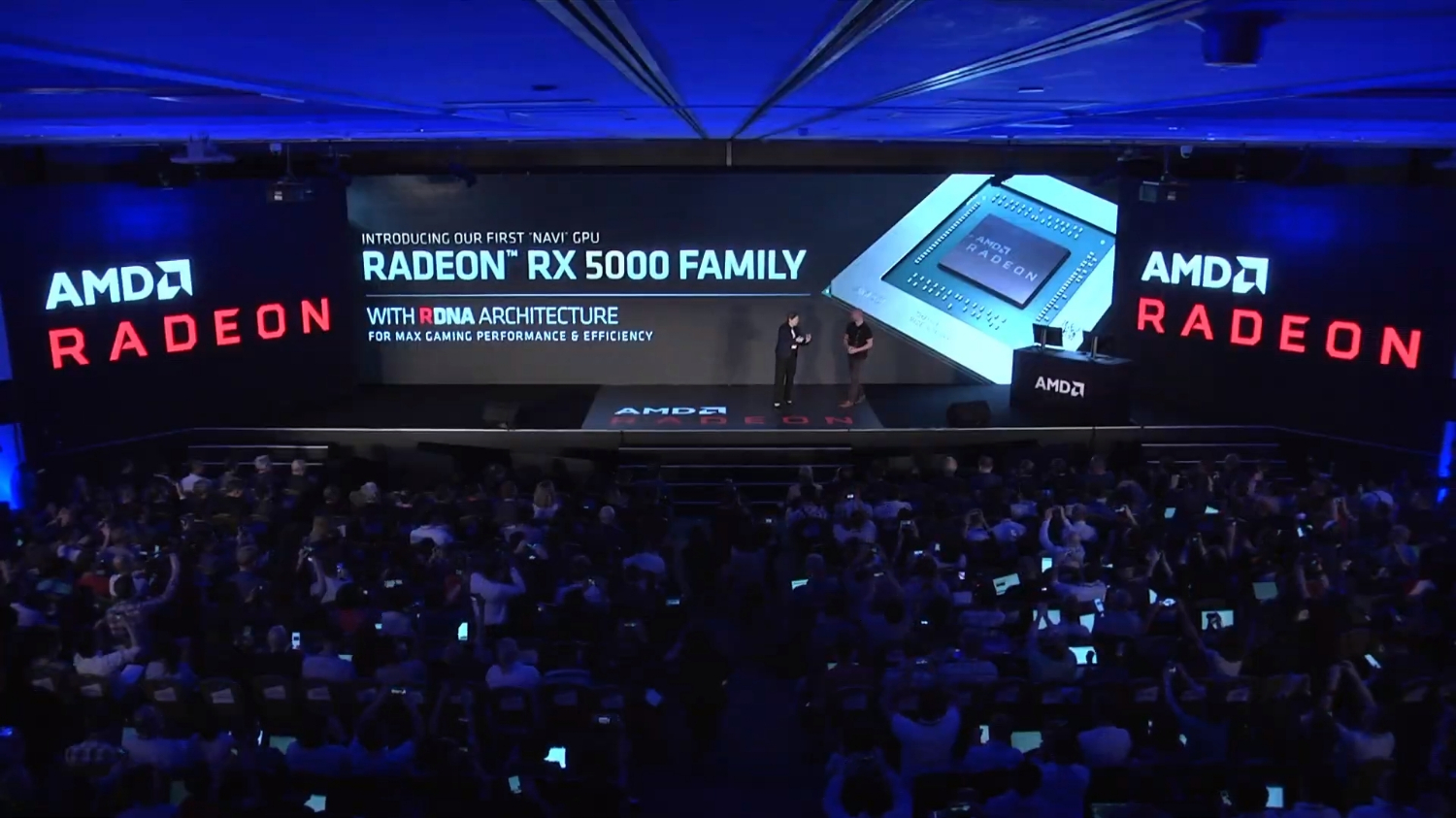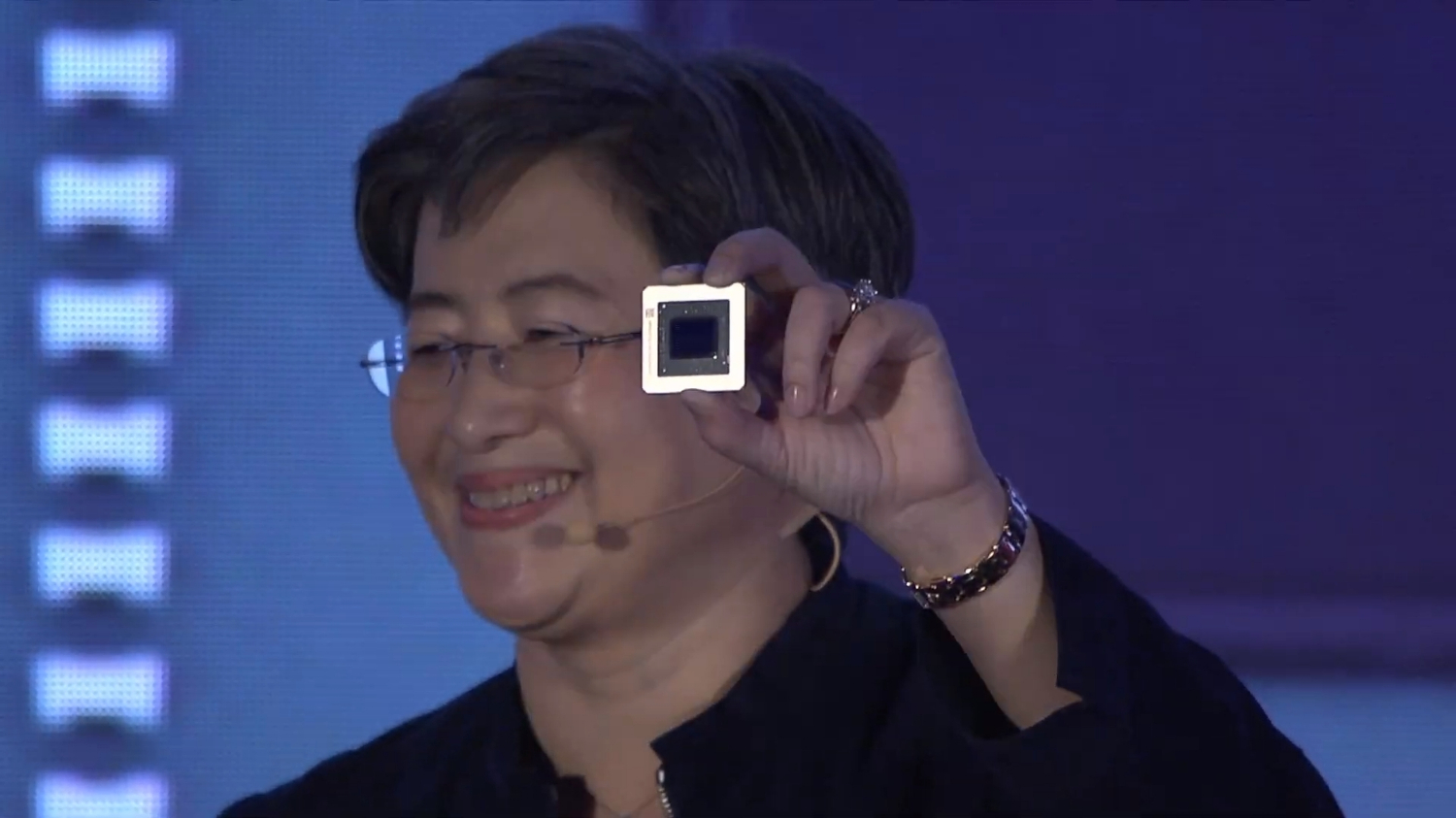AMD Announces Radeon RX 5000-Series Navi Graphics Cards
After many rumors, speculation and leaks, AMD has finally announced the company’s highly anticipated Radeon RX 5000-series gaming graphics cards at Computex 2019.
One of the biggest unknowns with Navi was how AMD was going to brand its graphics cards going forward. In the end, the chipmaker has ultimately decided to market its latest Navi offerings under the Radeon RX 5000-series moniker. As evidenced by the first two digits in gold colors, the Radeon RX 5000-series branding clearly draws its inspiration from the chipmaker’s recent 50th anniversary. Today AMD is also welcoming the arrival of its brand-new Radeon DNA (RDNA) gaming architecture to exist alongside the aging Graphics Core Next (GCN) architecture, which dates back seven years.
The RDNA architecture seemingly boasts a fresh compute unit design that, according to AMD, improves efficiency and increases instructions per cycle (IPC). AMD also implements a new multi-level cache hierarchy with the RDNA architecture, which brings benefits including reduced latency, higher bandwidth and lower power consumption. The RDNA architecture utilizes a streamline graphics pipeline to optimize performance-per-clock and high clock speeds.
In comparison to AMD’s previous GCN architecture, the RDNA architecture lands in a smaller package although the chipmaker doesn’t specify by how much. Nevertheless, the RDNA architecture delivers better gaming performance at a lower power consumption and reduced latency. AMD is touting gains up to 25 percent higher performance-per-clock and up to 50 percent higher performance-per-watt.
The Radeon RX 5000-series is the first family of AMD graphics cards to take advantage of the RDNA architecture. The graphics cards come equipped with the pristine Navi silicon, which is produced under TSMC’s 7nm manufacturing process. Perhaps Navi’s most noteworthy trait is the native support for the speedy PCIe 4.0 interface. AMD has been pushing the PCIe 4.0 standard very hard on its recent products including the Ryzen 3000-series processors and X570 chipset. Therefore, the Radeon RX 5000-series should fit into AMD’s ecosystem perfectly.
AMD President and CEO Dr. Lisa Su briefly showcased a Navi die during the keynote. Afterwards, Scott Herkelman, AMD's VP and GM of the Radeon Business Unit, took the stage to show an AMD Radeon RX 5700-series graphics card running beside Nvidia’s GeForce RTX 2070 in a direct comparison. The Radeon RX 5700-series unit managed to beat its rival by roughly 10 percent in the Strange Brigade benchmark.
The Radeon RX 5700-series graphics cards will be available in the month of July. There is no specific date at this time. However, AMD will reveal more information on Navi's price points, performance, product stack and technical features at the company’s "Next Horizon Gaming" livestream event at E3 on Monday, June 10, 2019 at 3 p.m. Pacific Time (22:00 UTC).
Get Tom's Hardware's best news and in-depth reviews, straight to your inbox.

Zhiye Liu is a news editor, memory reviewer, and SSD tester at Tom’s Hardware. Although he loves everything that’s hardware, he has a soft spot for CPUs, GPUs, and RAM.



